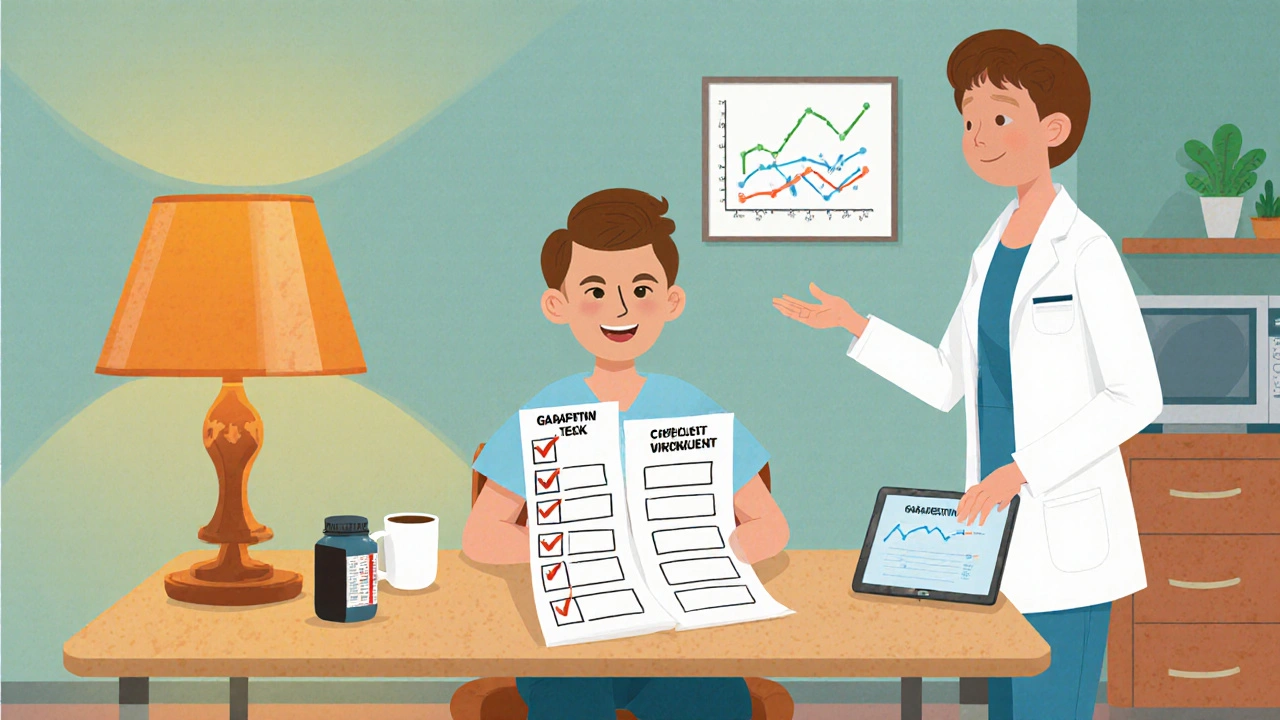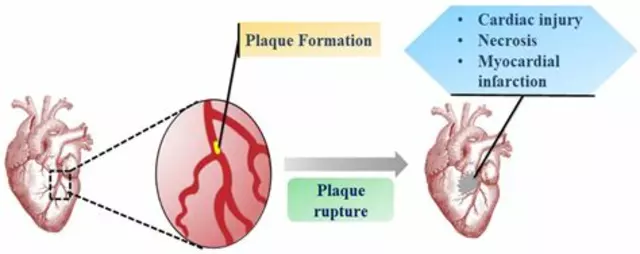Neurontin (Gabapentin) vs Alternatives: Detailed Comparison Guide
Medication Comparison Tool
Personalized Medication Selector
Answer a few quick questions to see which medications might work best for you.
Recommended Options
When doctors prescribe a drug for nerve pain, seizures, or restless legs, Neurontin often tops the list. But the market is crowded with other options that claim similar benefits with different side‑effect profiles or costs. This guide walks you through how Neurontin (gabapentin) stacks up against its most common alternatives, so you can decide which one fits your condition and lifestyle.
What is Neurontin (Gabapentin)?
Neurontin (Gabapentin) is a synthetic analogue of the neurotransmitter gamma‑aminobutyric acid (GABA) that modulates calcium channels to calm hyper‑excitable nerves. Approved by the FDA in 1993, it’s primarily used for post‑herpetic neuralgia, diabetic neuropathy, partial seizures, and restless‑leg syndrome.
How Neurontin Works
Gabapentin binds to the α2δ subunit of voltage‑gated calcium channels in the central nervous system. This reduces the release of excitatory neurotransmitters like glutamate, dampening the pain signals that travel along damaged nerves. The effect is dose‑dependent, which is why doctors start low and titrate upward based on response and tolerability.
Typical Uses and Dosing
- Neuropathic pain: 300 mg three times daily, up to 1800 mg/day.
- Partial seizures: 900 mg three times daily, max 3600 mg/day.
- Restless‑leg syndrome: 600 mg at night, may increase to 1800 mg/night.
Because gabapentin is eliminated unchanged by the kidneys, dosing must be adjusted for renal impairment.
Pros and Cons of Neurontin
Pros
- Effective for several types of neuropathic pain.
- Relatively low risk of severe organ toxicity.
- Widely available as a generic, keeping costs down.
Cons
- Common side effects: dizziness, drowsiness, peripheral edema.
- Potential for misuse and dependence, especially at higher doses.
- Slow titration required; relief may take weeks.
Top Alternatives to Neurontin
Below are the five drugs most frequently compared with gabapentin. Each has a unique mechanism, FDA‑approved indication, and safety profile.
Pregabalin (Lyrica)
Pregabalin is a structural cousin of gabapentin that also binds the α2δ calcium‑channel subunit, but with higher potency and faster absorption. FDA‑approved for diabetic neuropathy, post‑herpetic neuralgia, fibromyalgia, and generalized anxiety disorder.
Carbamazepine (Tegretol)
Carbamazepine is a sodium‑channel blocker originally developed for epilepsy. It’s frequently used off‑label for trigeminal neuralgia and certain neuropathic pain syndromes.
Topiramate (Topamax)
Topiramate is an anticonvulsant that enhances GABA activity and blocks excitatory glutamate receptors. Though not FDA‑approved for pain, clinicians sometimes prescribe it for chronic migraine and neuropathic pain when other options fail.
Valproic Acid (Depakote)
Valproic Acid works by increasing GABA levels in the brain and inhibiting sodium channels. It’s used for seizures and bipolar disorder, with occasional off‑label use for neuropathic pain.
Duloxetine (Cymbalta)
Duloxetine is a serotonin‑norepinephrine reuptake inhibitor (SNRI) that modulates pain pathways centrally. FDA‑approved for diabetic peripheral neuropathy, chronic musculoskeletal pain, and major depressive disorder.
Side‑Effect Profiles Compared
Understanding how each drug’s adverse events line up with your health priorities can save you weeks of trial‑and‑error.
| Drug | Common Side‑effects | Serious Risks | Cost (US $ per month, generic) |
|---|---|---|---|
| Neurontin (Gabapentin) | Dizziness, fatigue, peripheral edema | Dependence, respiratory depression when combined with opioids | ~$15‑$30 |
| Pregabalin (Lyrica) | Drowsiness, weight gain, blurred vision | Potential for abuse, acute withdrawal | ~$150‑$200 (brand) / $30‑$50 (generic) |
| Carbamazepine (Tegretol) | Nausea, drowsiness, ataxia | Stevens‑Johnson syndrome, aplastic anemia | ~$20‑$40 |
| Topiramate (Topamax) | Paresthesia, cognitive slowing, weight loss | Kidney stones, metabolic acidosis | ~$25‑$45 |
| Valproic Acid (Depakote) | GI upset, tremor, hair loss | Liver toxicity, pancreatitis, teratogenicity | ~$30‑$60 |
| Duloxetine (Cymbalta) | Nausea, dry mouth, insomnia | Hypertension, suicidal thoughts in young adults | ~$120‑$150 (brand) / $30‑$45 (generic) |
Choosing the Right Drug: Decision Checklist
- Primary symptom: Is the pain neuropathic, migraine‑related, or musculoskeletal?
- Side‑effect tolerance: Do you mind weight gain, sedation, or cognitive fog?
- Kidney or liver function: Gabapentin and pregabalin are renal‑cleared; valproic acid stresses the liver.
- Potential for abuse: If you have a history of substance misuse, avoid pregabalin and limit gabapentin doses.
- Cost considerations: Generic gabapentin is cheapest; brand‑only drugs can double or triple the price.
- Drug interactions: Check for interactions with opioids, antacids, or other CNS depressants.

Practical Tips for Switching or Combining Therapies
- Always taper gabapentin gradually to avoid withdrawal seizures.
- If moving to pregabalin, start at 75 mg once daily and increase slowly.
- When adding duloxetine, monitor blood pressure weekly for the first month.
- For patients with renal impairment, calculate creatinine clearance and adjust doses accordingly.
- Document any new side effects in a daily log; share it with your prescriber before the next visit.
Frequently Asked Questions
Can I take gabapentin and pregabalin together?
Combining the two usually isn’t recommended because they act on the same calcium‑channel subunit, which can amplify dizziness and sedation. A doctor might overlap them briefly during a switch, but simultaneous full doses increase overdose risk.
Is gabapentin effective for fibromyalgia?
Evidence is mixed. Some studies show modest pain reduction, but many clinicians prefer duloxetine or milnacipran as first‑line agents because they target serotonin‑norepinephrine pathways more directly.
What’s the best generic alternative to Lyrica?
Pregabalin itself is available as a generic in the US, costing far less than the brand name Lyrica. It provides the same potency with a slightly different side‑effect profile.
Can gabapentin cause addiction?
Yes, especially at high doses or when combined with opioids. Physical dependence can develop, and abrupt discontinuation may trigger seizures, so tapering is essential.
How fast does gabapentin start working for nerve pain?
Most patients notice a reduction in pain after 1‑2 weeks of titration, but full benefit may take up to 6 weeks. Patience and dose adjustments are key.
Bottom Line
Neurontin remains a solid first‑line choice for many neuropathic conditions because of its efficacy, safety, and low price. However, if you experience troublesome sedation, have renal issues, or need stronger pain control, alternatives like pregabalin, duloxetine, or carbamazepine may fit better. Use the checklist above, talk openly with your prescriber, and track outcomes-you’ll find the right match faster than you think.







13 Comments
Nikita Shue
October 21, 2025 at 19:44
Alright folks, if you’re wrestling with nerve pain and looking at Neurontin, remember it’s a solid starter because it’s cheap and works for a bunch of conditions. The key is to start low, watch for dizziness, and give it a couple weeks before deciding if you need to up the dose. Keep an eye on kidney function – dose‑adjust if you’ve got renal issues. If sedation’s a killer, think about switching to pregabalin or duloxetine sooner rather than later. Stay proactive, track your symptoms daily, and bring that log to your doc.
Ryan Spanier
October 22, 2025 at 20:44
It is advisable to consider the pharmacokinetic profile of gabapentin when adjusting doses for renal impairment, as the drug is eliminated unchanged by the kidneys. Monitoring creatinine clearance can inform appropriate dose reductions, thereby minimizing adverse events such as peripheral edema. Additionally, when transitioning to pregabalin, a structured taper of gabapentin over a period of one to two weeks can mitigate withdrawal seizures. Documentation of symptom progression, side‑effect severity, and functional outcomes will facilitate an evidence‑based discussion with your prescriber. This systematic approach aligns with best practice guidelines for neuropathic pain management.
Abhinav Moudgil
October 23, 2025 at 21:44
The mechanistic nuances distinguishing gabapentin from its pharmacological cousins merit a thorough exposition, particularly for clinicians seeking an optimal therapeutic algorithm. Gabapentin exerts its analgesic effect principally by binding to the α2δ subunit of voltage‑gated calcium channels, thereby attenuating excitatory neurotransmitter release such as glutamate and substance P. In contrast, pregabalin, while sharing this binding site, possesses a higher affinity and a more rapid absorption profile, which translates into a steeper dose‑response curve and, occasionally, a more pronounced sedative burden. Carbamazepine, a sodium‑channel blocker, diverges fundamentally in its electrophysiological actions, stabilizing the inactivated state of neuronal membranes and offering particular efficacy in trigeminal neuralgia. Topiramate’s multimodal mechanism incorporates both GABAergic potentiation and antagonism of AMPA/kainate receptors, rendering it a viable adjunct for refractory migraine‑associated neuropathic pain. Valproic acid broadens the therapeutic horizon by elevating cerebral GABA concentrations and modulating sodium channels, yet its hepatotoxic potential imposes stringent monitoring requirements. Duloxetine, as an SNRI, circumvents ion channel modulation altogether, instead augmenting descending inhibitory pathways via serotonin and norepinephrine reuptake inhibition, a strategy advantageous in mixed nociceptive‑neuropathic syndromes. The pharmacoeconomic considerations are equally pivotal; generic gabapentin typically commands a monthly cost in the low double‑digit range, whereas brand‑name pregabalin may ascend beyond one hundred dollars, albeit generic formulations now offer a competitive alternative. Renal clearance dictates dose adjustments for both gabapentin and pregabalin, while hepatic metabolism predominates for carbamazepine, topiramate, valproic acid, and duloxetine, necessitating individualized dosing schemas. Adverse effect profiles, too, diverge: gabapentin frequently precipitates dizziness and peripheral edema, pregabalin is notorious for weight gain and visual disturbances, carbamazepine carries a rare but severe risk of Stevens‑Johnson syndrome, topiramate may engender cognitive slowing and nephrolithiasis, valproic acid poses teratogenic hazards, and duloxetine can exacerbate hypertension and suicidal ideation in younger adults. Consequently, a clinician must harmonize efficacy, tolerability, comorbidities, and patient preferences when charting a treatment trajectory. Real‑world evidence suggests that combination therapy, such as adding duloxetine to a stable gabapentin regimen, can amplify analgesia through synergistic modulation of both peripheral and central pain pathways. Nonetheless, caution is warranted to avoid pharmacodynamic saturation and additive sedation. Ultimately, the selection of an appropriate agent rests upon a nuanced appraisal of the individual’s clinical context, pharmacodynamic properties, and socioeconomic constraints, thereby ensuring a personalized and cost‑effective pain management plan.
Peter Rupar
October 24, 2025 at 22:44
Look, gabapentin is just a cheap chill pill that makes you drowsy and can get you hooked if you don’t watch it. Don’t be a fool and think it’s harmless.
bill bevilacqua
October 25, 2025 at 23:44
Well, I guess some peopel find it useful; but honestly, the side effects are a pain-dizzy, edematous, and ugh, the cost isn’t even the biggest issue; the real bug is how it can mess with your focus...;;
rose rose
October 26, 2025 at 23:44
Pharma hides the true addiction risk of gabapentin behind cheap pricing.
Emmy Segerqvist
October 28, 2025 at 00:44
Oh my gosh!!! This is exactly why we need to stay vigilant!!! The “cheapest” tag is just a disguise for a potential epidemic of dependence!!!
Grace Baxter
October 29, 2025 at 01:44
While many clinicians champion gabapentin as a first‑line agent for neuropathic pain, one must interrogate the underlying assumptions that drive such prescribing habits. The notion that cost‑effectiveness alone justifies widespread utilization overlooks the nuanced interindividual variability in pharmacodynamics. Moreover, the literature reveals a subset of patients who experience paradoxical hyperalgesia, a phenomenon that contradicts the drug’s purported analgesic uniformity. It is also worth noting that the sedative profile of gabapentin may impair daily functioning, particularly in occupations demanding sustained alertness. In contrast, agents like duloxetine, though pricier, address both nociceptive and affective dimensions of pain through serotonin‑norepinephrine reuptake inhibition. The tendency to default to gabapentin can inadvertently marginalize patients who might benefit more from a multimodal regimen. Furthermore, the regulatory landscape has begun acknowledging gabapentin’s abuse potential, prompting tighter controls in several jurisdictions. This shift underscores the imperative to reevaluate reliance on a single medication class. Clinicians should also consider the sociocultural context, as patients from marginalized communities may have limited access to comprehensive pain management resources. By broadening the therapeutic toolbox, we can mitigate the risk of over‑dependence on any one drug. Ultimately, the decision matrix must balance efficacy, side‑effect burden, patient preferences, and systemic factors, rather than succumbing to a one‑size‑fits‑all mentality. A deliberate, individualized approach remains the cornerstone of responsible neuropathic pain care.
Eddie Mark
October 30, 2025 at 02:44
Sounds like a solid call. I’m all for mixing meds when needed. Just keep the dosage low and watch for any weirdness.
Bradley Allan
October 31, 2025 at 03:44
Listen up!!! The medical community can’t afford this laissez‑faire attitude toward powerful neuroactive compounds!!! When you cavalierly suggest “mixing meds” without rigorous monitoring, you risk turning patients into lab rats!!! It's a moral imperative to demand strict protocols, regular labs, and informed consent!!! Anything less is an ethical violation that we must call out!!!
Kyle Garrity
November 1, 2025 at 04:44
I hear your concern, and it’s important to keep patient safety front and center. At the same time, many individuals truly benefit from carefully supervised combination therapy. Open communication with the prescribing physician can ensure that monitoring is in place and side effects are caught early. Balancing caution with compassion can help patients achieve relief without feeling abandoned.
brandon lee
November 2, 2025 at 05:44
Nice discussion guys. Glad to see everyone sharing their thoughts.
Joshua Pisueña
November 3, 2025 at 06:44
Appreciate the vibe here. Remember, tracking your pain scores can really help your doctor fine‑tune the treatment. Stay positive and keep the conversation going.